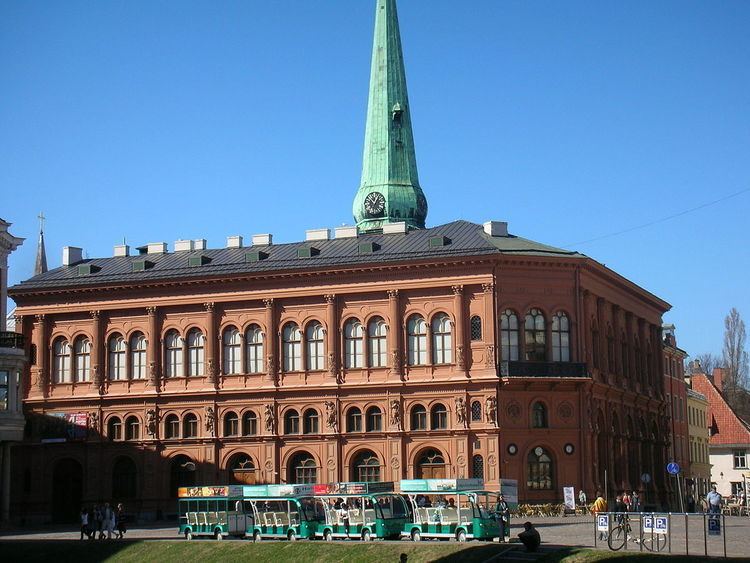Established 1920 | Phone +371 67 226 467 | |
 | ||
Address Pils laukums 3, Centra rajons, Rīga, LV-1050, Latvia Similar Mākslas muzejs "Rīgas Bir, Latvian National Museum, Museum of the History of Riga a, Latvian Museum of National, Riga Castle | ||
The Art Museum RIGA BOURSE (in Latvian: 'Mākslas muzejs RĪGAS BIRŽA') is a museum in Riga, Latvia. It was established in 1920 and contains the most extensive collection of world art in Latvia from Ancient Egyptian/Middle eastern art dating back to 5000 BC to present.
Contents
Building
In the first half of the 19th century, Riga's trade developed. The merchants established their own permanent organization, the Stock Exchange Committee. At this time, all deals were made in the City Hall (Rathaus).
In 1847, the Great Guild of Riga decided to leave the City Hall and to give the rooms back to the city's court institutions. The members decided to build a new building that could contain the Guild itself, the Stock Exchange Committee and a city theatre.
The architect that had to design the bourse was Harald Julius von Bosse, a Baltic German noble who worked in Saint-Petersburg. His missions were to settle the bourse in the Old Town and also "to adapt to the irregular layout of the blocks, the narrow streets and the dense arrangement of buildings.". Later, the idea of the city theater was rejected because of the risks of fire. Von Bosse started his design in 1850 but the location he chose didn't please the Exchange Committee. Then it was decided in 1851 to construct the building on the corner of Pils iela, Šķūņu iela and Jēkaba iela. Finally, the construction began on 25 March 1852.
For the façade of the Bourse, it was decided to use a terracotta décor, sculptures with allegorical content and decorative elements. The Danish sculptor David Jensen, also established in Saint-Petersburg, was in charge of this project. Then, on 26 May 1856, the Riga Stock Exchange was ceremoniously opened in the presence of the Russian tsar Alexander II.
In 1937, several buildings were demolished to create the Dome square (Doms laukums).
After the World War II, Latvia became part of the Soviet Union and the building became the House of Science and Technology Propaganda. The façade was repainted in lighter colours (pale pink and brown).
On 24 January 1980, a fire broke out on the upper floor halls. The museum keeps nowadays many scars of this fire. The reconstruction began several months later but stopped in 1982.
On 30 September 2004, the reconstruction was scheduled with the project called "Reconstruction of the former Stock Exchange" but works began only in 2008 and finished in 2011. On 20 August 2011, the building could finally host the foreign art collections and be called the Art Museum Riga Bourse.
Collections
The collections of the Art Museum Riga Bourse have been collected by several art collecters during the 19th and the 20th century.
The first private collection that had been given to the city of Riga was Nikolaus von Himsel's (1729-1764). He was a Baltic German doctor and traveler and bought many oriental objects in order to make a Kunstkammer or art cabinet. Then, Domenico de' Robbiani (1793-1889), an Italian merchant settled in Riga, gave his collection of paintings that gathered artworks from the Netherlands, Germany or France. These two collections were merged and the idea of a museum arose.
Because of a lack of space, some paintings were settled in the Mayor's house whose name was Ludiwig Wilhelm Kerkovius (1831–1904). At this time, several collecters gave their collections: Reinhold Schilling (1819-1888) gave 30 paintings and Kerkovius 26 paintings. The most important gift was the Friedrich Wilhelm Brederlo's collection (1779-1862). He gave 201 paintings, 70 of which were made by Dutch masters.
